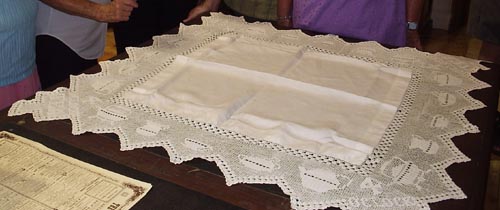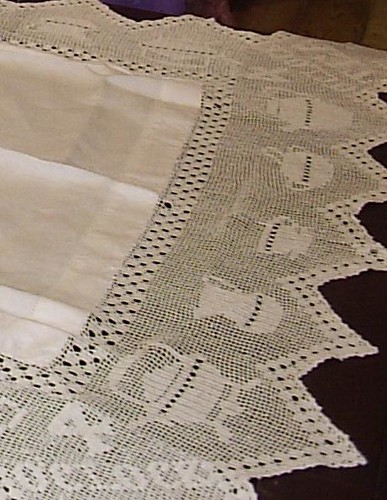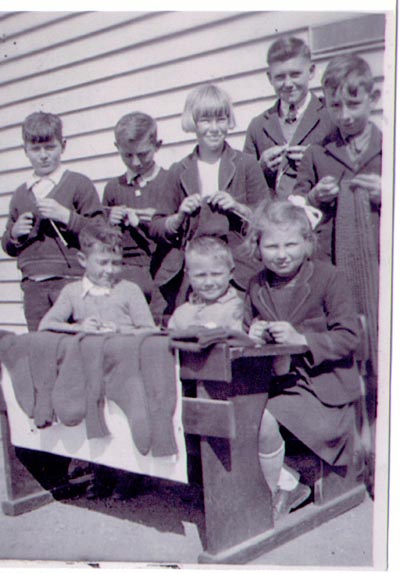Donation from National Trust (WA)
Stratford Historical Society counts itself fortunate that the National Trust of Australia (Western Australia) recently made available a number of items through their deaccessioning program.
Whilst we would have liked some of the items like a very old sewing machine, we thought it would be a little difficult to have it transported from Western Australia. So, after that, what we really were hoping to acquire was a beautiful supper-cloth with crockery motifs. So we were delighted to receive it, along with a number of beautiful doilies, in the post on Tuesday.
This is the cloth:
and here is a close-up of the motifs. And the phrase "4 o'clock" in all four corners:
Plus some very entranced members and visitors immediately after the package was opened:
Stratford Historical Society very much appreciates the generosity of the National Trust of Australia (Western Australia), in making these items that were surplus to their collection available.
Whilst we would have liked some of the items like a very old sewing machine, we thought it would be a little difficult to have it transported from Western Australia. So, after that, what we really were hoping to acquire was a beautiful supper-cloth with crockery motifs. So we were delighted to receive it, along with a number of beautiful doilies, in the post on Tuesday.
This is the cloth:
and here is a close-up of the motifs. And the phrase "4 o'clock" in all four corners:
Plus some very entranced members and visitors immediately after the package was opened:
Stratford Historical Society very much appreciates the generosity of the National Trust of Australia (Western Australia), in making these items that were surplus to their collection available.





